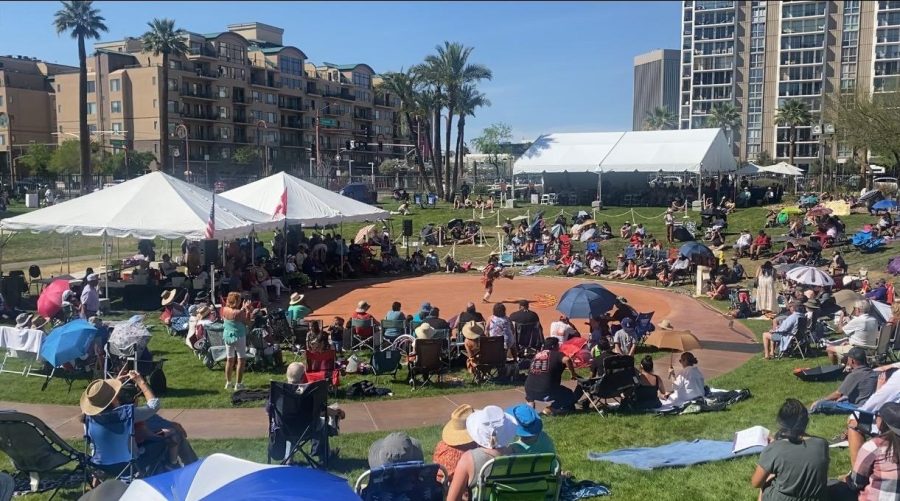The annual Hoop Dance competition returns to the Heard Museum after a long absence due to COVID-19
2022 Hoop Dancing Championships
March 31, 2022
The Heard Museum hosted the return of the annual hoop dance competition on Sunday—a tradition that has spanned more than 32 years in downtown Phoenix.
The museum houses one of the largest collections of American Indian art, media, and some history as well.
Their mission statement says that they’re “the world’s preeminent museum for the presentation, interpretation, and advancement of American Indian art, emphasizing its intersection with broader artistic and cultural themes”.
Showcasing American Indian talent is not complete without the hoop dance competition.
The hoop dance has traditional and cultural roots among many tribes, but became popularized by a single man that all hoop dancers pay their respects to.
According to material given out at the event by the Heard Museum, “The hoop dance, as we know it today, was developed and perfected by Tony Whitecloud, who created a performance program for the tourism industry using willow hoops to form shapes and designs while dancing to intertribal music”.
Whitecloud would perform this dance all through the 1930’s to the 1950’s, where many American Indian youth picked it up and began hoop dancing.
As more and more dancers began to perform, there was a need for a competition.
It was in 1991 at the New Mexico State Fair Indian Village, that the first world championship was held. The Heard Museum agreed to host the second championship the following year, and it has stayed in the Valley ever since.
Hoop dancing is unique, compared to many different American Indian dances, in that it is performed as artistic expression, using the hoops to resemble many different shapes of animals or objects. Many dancers like to tell stories with the shapes and designs they make, and this creativity is one of the elements judged in competition.
There are four divisions, youth, teen, senior, and adult, and feature dancers from all tribes across North America. Dancers are given a song and a timer that allows them to show their creativity as much as possible for the judges.
Northeast Valley News spoke with Beany John, a competitor from Alberta, Canada, who said that “hoop dancing is a healing dance, so as well as healing yourself, you’re healing everyone around you”. John also talked about the struggle of the pandemic, and what that did to her moral as a competitor.
“During the pandemic, when everything was online it was really hard to get that feeling again, so being here really energized everything,” John said.
This was the first in person competition since February 2020, right before the pandemic began and effectively shut down the events.
John was able to place second in the adult division, and featured two female competitors in the finals, something that has never happened at the competition before.
As a child, John participated in many of the hoop dancing workshops that were held in Canada, and from there became a world class competitor.
“I was self-taught, by just looking at it and figuring it out for myself, and I have been hoop dancing since I was eight years old,” John said.
John took home $3,000 dollars as a second-place finisher and plans to work harder for next year’s championship.
More information about the hoop dance and American Indian culture can be found at heard.org.


